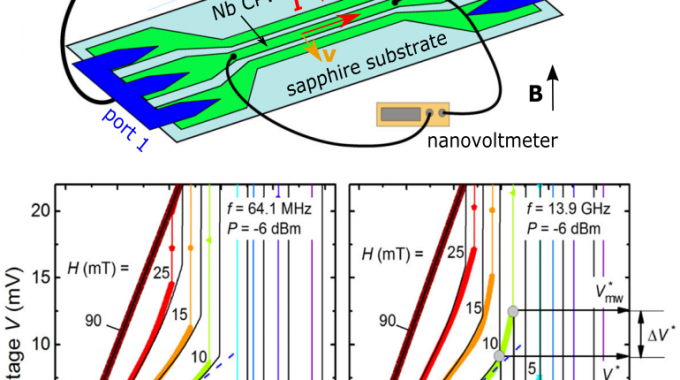
STSM of Oleksandr Dobrovolskiy at the V. Karazin Kharkiv National University (Ukraine)
The goal of the STSM was to analyze the experimental results on the (dc+ac)-driven dynamics of vortices within the frameworks of the theories of flux-flow instability (FFI) and microwave-stimulated superconductivity. This analysis was motivated by the experimental observation of microwave-stimulated superconductivity in the vortex state and the need for a generalization of the FFI theory to the presence of a microwave current. It has been realised that almost any use of a superconductor at strong currents implies a non-equilibrium state. Specifically, while a sufficiently high-power electromagnetic field of GHz frequency can stimulate superconductivity, fast motion of magnetic flux quanta (Abrikosov vortices) can trigger an instability abruptly quenching the superconducting state. In the course of the analysis and discussions enabled by the STSM, we showed both experimentally and theoretically that such dynamical quenching of the vortex state in Nb thin films can be advanced or delayed by tuning the power and frequency of the microwave ac stimulus added to a dc bias current. The experimental findings were also supported by time-dependent Ginzburg-Landau simulations and they can be explained, qualitatively, based on a model of “breathing mobile hot spots”, implying a competition of heating and cooling of quasiparticles along the trajectories of moving fluxons whose core sizes vary in time. In addition, universality has been demonstrated for the stimulation effect on the thermodynamic and transport properties of type II superconductors. The original results are reported in Commun. Phys. 3, 64 (2020).
